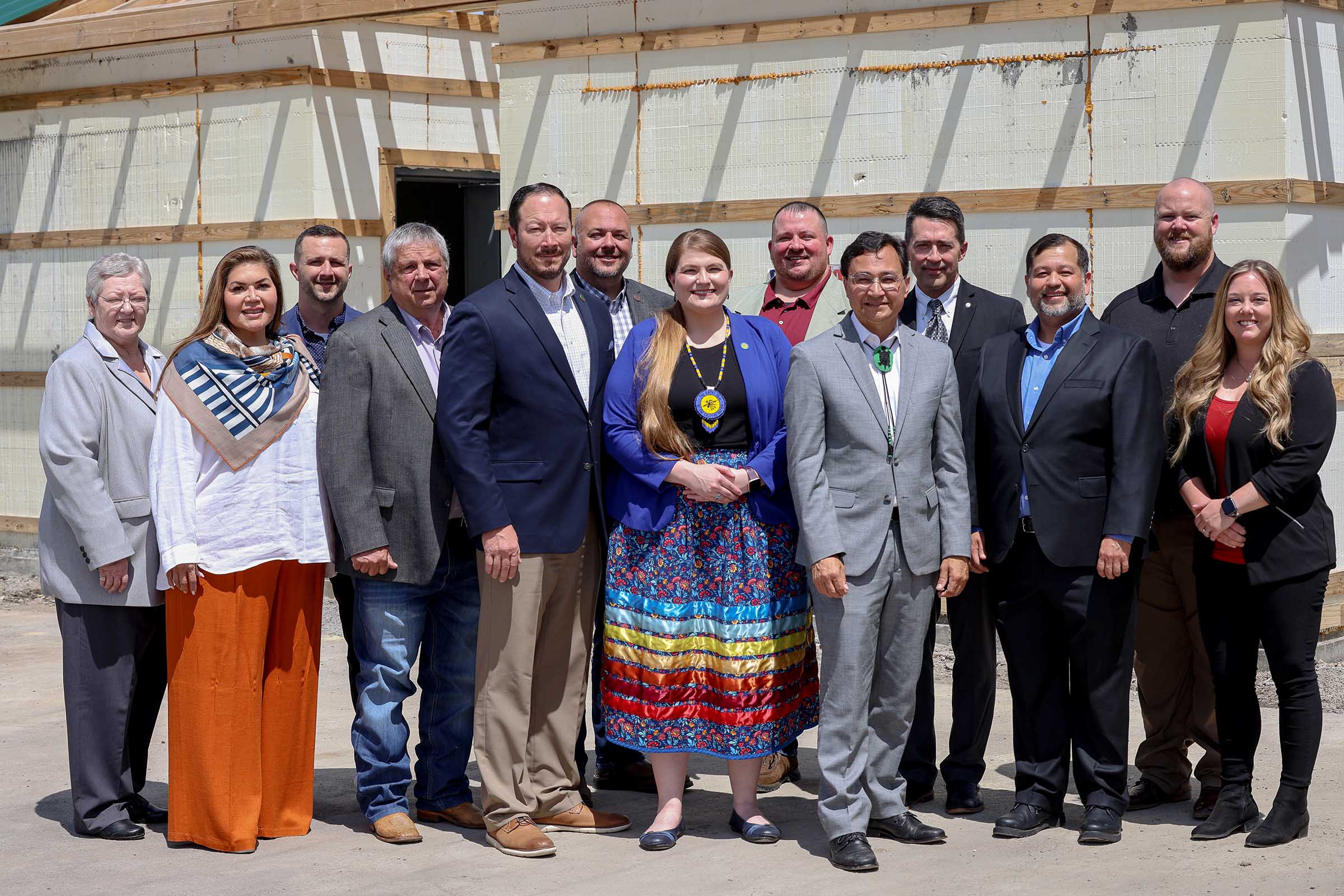
- Details
- By Chuck Hoskin Jr
Guest Opinion. Severe weather – including tornadoes, flooding and violent thunderstorms – is an inevitable reality on the Cherokee Nation Reservation. Storms can wreak havoc on Cherokee communities, even endangering lives. The risk is greatest for those families that struggle to afford a safe place to ride out storms. All Cherokees should have peace of mind that they can be safe from severe weather.
That is why I am proud to announce a new program to construct about 300 storm shelters across the Cherokee Nation Reservation. We want to make sure all Cherokees can protect themselves and their loved ones from dangerous weather. Deputy Chief Bryan Warner and I know we have a duty to protect Cherokee people — especially our elders, citizens with disabilities and military veterans. This program takes direct action to do just that.
The $2.4 million initiative, funded by the tribe's American Rescue Plan Act dollars, will provide lifesaving above-ground storm shelters. Applications are currently being accepted, and our diligent team at the Housing Authority of the Cherokee Nation is working to verify applications and conduct site inspections. All 300 shelters will be delivered and constructed over the next year.
We also recently hosted leaders from the Federal Emergency Management Agency to visit and tour a community storm shelter under construction in Hulbert, a community where nine tornados have touched down since 2015. Construction of the 256-person capacity shelter, which can withstand winds greater than 200 mph, should be completed by July. It will be open to the entire community during storms, and it is located by a tribal community center and efficiency homes for Cherokee elders.
The Hulbert site is one of seven community shelters the tribe is constructing, using both tribal dollars and FEMA grant funds. This collaboration between FEMA and Cherokee Nation further protects our rural families.
Shelters have been completed at the Cherokee Nation Emergency Medical Services building in Tahlequah, along with the communities of Tailholt, Greasy and Chewey. Future sites include the Tsa-La-Gi apartments in Sallisaw and the Durbin Feeling Language Center in Tahlequah.
These initial ARPA-funded sites are only the beginning. Deputy Chief Warner and I will announce plans for future community storm shelter and other types of safe room space in the near future.

For those who do not have their own safe room or storm shelter, a designated place within the community for protection during storms is essential. We urge all Cherokees to be mindful of weather forecasts, so they can get to a secure place in time. These new buildings will be invaluable assets for local communities, and they showcase another successful tribal-federal partnership.
A core value at the Cherokee Nation is believing in the power of community and taking care of one another. These new investments speak to that value. Together, we are building long-term infrastructure that will help protect our Cherokees in times of crisis.
Chuck Hoskin, Jr. is the principal chief of the Cherokee Nation.
More Stories Like This
Colorado cannot heal until it confronts Sand Creek honestlyNative American Mothers Deserve to Live
Technology Rooted in Tradition is Strengthening Cherokee Nation
The Lumbee Tribe of North Carolina: #575
Tribes Do Not Need a Greenlight to Build Renewable Energy
Help us defend tribal sovereignty.
At Native News Online, our mission is rooted in telling the stories that strengthen sovereignty and uplift Indigenous voices — not just at year’s end, but every single day.
Because of your generosity last year, we were able to keep our reporters on the ground in tribal communities, at national gatherings and in the halls of Congress — covering the issues that matter most to Indian Country: sovereignty, culture, education, health and economic opportunity.
That support sustained us through a tough year in 2025. Now, as we look to the year ahead, we need your help right now to ensure warrior journalism remains strong — reporting that defends tribal sovereignty, amplifies Native truth, and holds power accountable.
 The stakes couldn't be higher. Your support keeps Native voices heard, Native stories told and Native sovereignty defended.
The stakes couldn't be higher. Your support keeps Native voices heard, Native stories told and Native sovereignty defended.
Stand with Warrior Journalism today.
Levi Rickert (Potawatomi), Editor & Publisher

